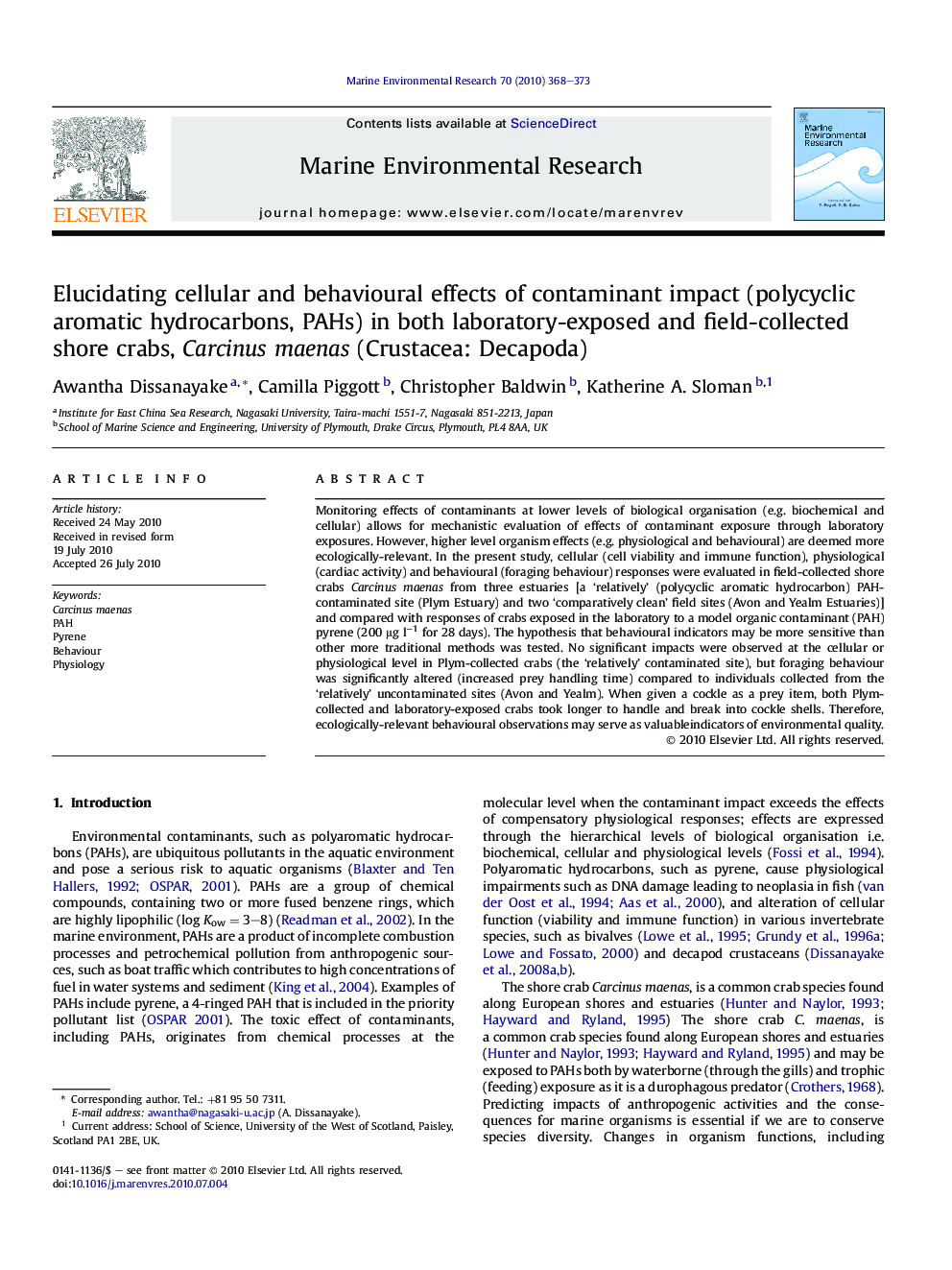| کد مقاله | کد نشریه | سال انتشار | مقاله انگلیسی | نسخه تمام متن |
|---|---|---|---|---|
| 4551195 | 1627610 | 2010 | 6 صفحه PDF | دانلود رایگان |

Monitoring effects of contaminants at lower levels of biological organisation (e.g. biochemical and cellular) allows for mechanistic evaluation of effects of contaminant exposure through laboratory exposures. However, higher level organism effects (e.g. physiological and behavioural) are deemed more ecologically-relevant. In the present study, cellular (cell viability and immune function), physiological (cardiac activity) and behavioural (foraging behaviour) responses were evaluated in field-collected shore crabs Carcinus maenas from three estuaries [a ‘relatively’ (polycyclic aromatic hydrocarbon) PAH-contaminated site (Plym Estuary) and two ‘comparatively clean’ field sites (Avon and Yealm Estuaries)] and compared with responses of crabs exposed in the laboratory to a model organic contaminant (PAH) pyrene (200 μg l−1 for 28 days). The hypothesis that behavioural indicators may be more sensitive than other more traditional methods was tested. No significant impacts were observed at the cellular or physiological level in Plym-collected crabs (the ‘relatively’ contaminated site), but foraging behaviour was significantly altered (increased prey handling time) compared to individuals collected from the ‘relatively’ uncontaminated sites (Avon and Yealm). When given a cockle as a prey item, both Plym-collected and laboratory-exposed crabs took longer to handle and break into cockle shells. Therefore, ecologically-relevant behavioural observations may serve as valuableindicators of environmental quality.
Journal: Marine Environmental Research - Volume 70, Issue 5, December 2010, Pages 368–373